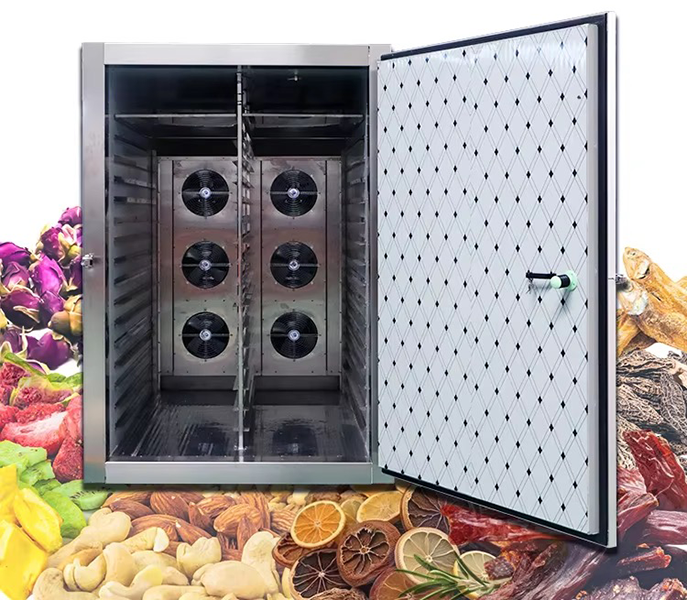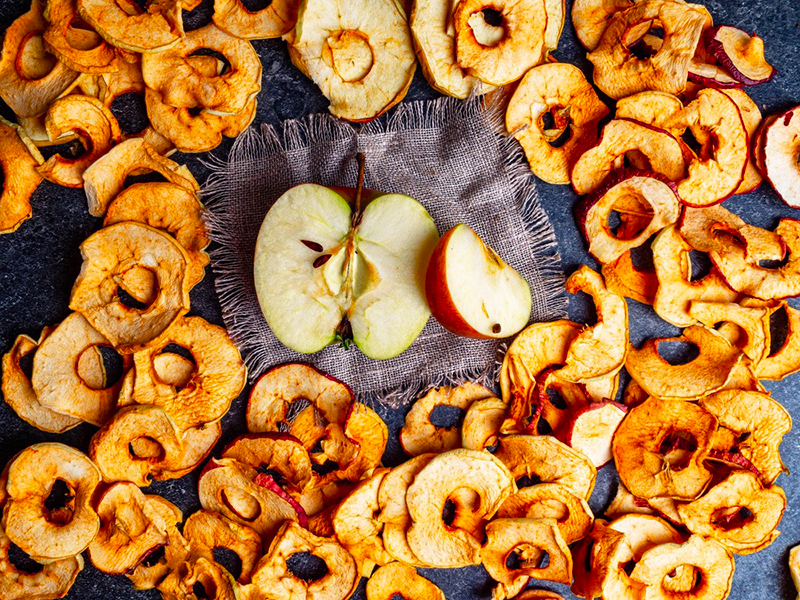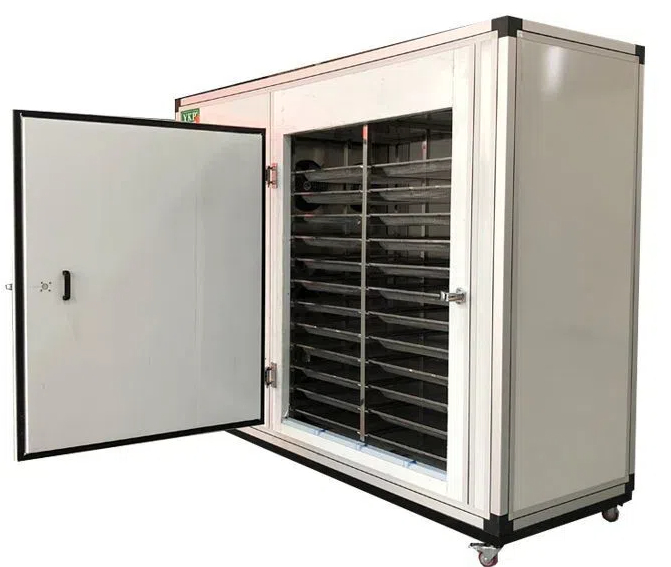
Content Menu
● Understanding Food Dehydration
● Benefits of Using a Food Dehydrator
● What Can You Make with a Food Dehydrator?
>> 1. Dried Fruits
>> 2. Vegetable Chips
>> 3. Jerky
>> 4. Fruit Leather
>> 5. Herbs and Spices
>> 6. Granola
>> 7. Soups and Stews
>> 8. Dog Treats
● Tips for Successful Dehydration
● Creative Recipes Using a Food Dehydrator
>> Recipe 1: Spiced Cauliflower Popcorn
>> Recipe 2: Watermelon Candy Strips
>> Recipe 3: Homemade Raisins
● Advanced Techniques in Food Dehydration
>> Vacuum Sealing Dehydrated Foods
>> Layering Flavors
>> Creating Meal Kits
● Health Benefits of Dehydrated Foods
● Conclusion
● FAQ
>> 1. How long does it take to dehydrate food?
>> 2. Do I need to pre-treat fruits before dehydrating?
>> 3. Can I dehydrate cooked foods?
>> 4. What is the best temperature for dehydrating?
>> 5. How should I store dehydrated foods?
● Citations:
Food dehydrators are versatile appliances that allow you to preserve food by removing moisture, extending its shelf life while retaining nutritional value. This article explores various creative and delicious items you can make using a food dehydrator, ranging from snacks to meal components.

Understanding Food Dehydration
Dehydrating food is one of the oldest preservation methods, and it works by removing moisture that bacteria, yeast, and mold need to grow. A food dehydrator functions by circulating warm air around the food at low temperatures (typically between 40°C to 75°C), allowing moisture to evaporate without cooking the food. This method preserves the color, flavor, and nutrients of the ingredients.
Benefits of Using a Food Dehydrator
- Extended Shelf Life: Dehydrated foods can last for years when stored properly.
- Healthy Snacks: You can create nutritious snacks without added preservatives or sugars.
- Cost-Effective: Dehydrating excess fruits and vegetables can save money and reduce waste.
- Versatility: From fruits to meats, a dehydrator can handle a wide range of foods.
- Convenience: Dehydrated foods are lightweight and easy to store, making them perfect for camping or travel.
What Can You Make with a Food Dehydrator?
Here's a list of exciting items you can create using your food dehydrator:
1. Dried Fruits
Dried fruits are a classic dehydrator staple. They make for excellent snacks and can be added to cereals, trail mixes, or baked goods.
- Apples: Slice thinly and sprinkle with cinnamon for a tasty treat.
- Bananas: Cut into rounds for banana chips.
- Mangoes: Puree and spread on trays for fruit leather.
2. Vegetable Chips
Dehydrated vegetable chips are crunchy and flavorful alternatives to traditional snacks.
- Kale Chips: Toss with olive oil and seasoning before dehydrating.
- Sweet Potato Chips: Slice thinly and season with salt or spices.
- Zucchini Chips: Marinate in vinegar for a tangy flavor.
3. Jerky
Making jerky at home is easy with a dehydrator. You can use beef, chicken, or even tofu for vegetarian options.
- Beef Jerky: Marinate strips of beef in soy sauce, garlic powder, and pepper before dehydrating.
- Turkey Jerky: Use ground turkey mixed with spices for a leaner option.
4. Fruit Leather
Fruit leathers are chewy snacks made from pureed fruit. They are easy to customize with different fruit combinations.
- Berry Leather: Blend mixed berries with a bit of honey or agave syrup.
- Apple-Cinnamon Leather: Combine apple puree with cinnamon for a fall-inspired treat.
5. Herbs and Spices
Dehydrate fresh herbs to create your own spice blends.
- Basil: Dry fresh basil leaves to use in cooking.
- Garlic Powder: Dehydrate garlic slices and grind them into powder.
6. Granola
Homemade granola can be made by dehydrating oats mixed with nuts, seeds, and dried fruits.
- Combine rolled oats with honey or maple syrup and your choice of add-ins before spreading on trays.
7. Soups and Stews
You can dehydrate complete meals like soups by blending ingredients into a paste and drying them into "bark."
- Vegetable Soup Bark: Blend cooked vegetables with broth until smooth, then dehydrate.
8. Dog Treats
Make healthy treats for your pets by dehydrating meats or fruits like sweet potatoes.

Tips for Successful Dehydration
1. Slice Evenly: Ensure all pieces are cut to uniform thickness for consistent drying.
2. Pre-Treat Fruits: Soak fruits in lemon juice or ascorbic acid solution to prevent browning.
3. Check Moisture Levels: Test the dryness of your foods; they should be leathery but not sticky.
4. Store Properly: Keep dehydrated foods in airtight containers in a cool, dark place to maximize shelf life.
5. Experiment with Flavors: Don't hesitate to add spices or marinades before dehydration for enhanced flavor profiles.
Creative Recipes Using a Food Dehydrator
Here are some fun recipes you can try:
Recipe 1: Spiced Cauliflower Popcorn
1. Cut cauliflower into bite-sized pieces.
2. Toss with olive oil and your favorite spices (like paprika or garlic powder).
3. Spread evenly on dehydrator trays.
4. Dehydrate at 60°C until crispy.
Recipe 2: Watermelon Candy Strips
1. Puree watermelon until smooth.
2. Spread evenly on dehydrator trays in a thin layer.
3. Dehydrate at 60°C until pliable but not sticky.
4. Cut into strips once cooled.
Recipe 3: Homemade Raisins
1. Wash grapes thoroughly and remove stems.
2. Spread grapes on trays without overlapping.
3. Dehydrate at 60°C until shriveled but still chewy (about 24 hours).
Advanced Techniques in Food Dehydration
To elevate your dehydration game further, consider these advanced techniques:
Vacuum Sealing Dehydrated Foods
Vacuum sealing is an excellent way to extend the shelf life of your dehydrated foods even further. By removing air from the packaging, you prevent oxidation which can lead to spoilage and loss of flavor over time. This is particularly beneficial for long-term storage of items like jerky or dried fruits.
Layering Flavors
When preparing foods for dehydration, think about layering flavors through marinades or spice rubs before drying them out. For instance:
- Marinate chicken strips in teriyaki sauce before making jerky.
- Coat apple slices in cinnamon sugar before dehydration for an extra sweet treat.
Creating Meal Kits
Dehydrators allow you to prepare complete meal kits that can be easily rehydrated later:
- Combine dried vegetables, spices, and grains in one bag; just add water when you're ready to cook!
Health Benefits of Dehydrated Foods
Dehydrating food not only extends its shelf life but also offers numerous health benefits:
- Nutrient Retention: Most nutrients remain intact during the dehydration process as it uses low heat compared to cooking methods that may destroy vitamins.
- Increased Fiber: Dried fruits and vegetables often have higher fiber content per serving than their fresh counterparts due to the concentration effect during dehydration[3].
- Weight Management: Snacking on dried fruits instead of high-calorie options can aid in weight management due to their lower calorie density when consumed in moderation[10].
Conclusion
A food dehydrator is an invaluable tool for anyone looking to preserve food while creating delicious snacks and meal components at home. From dried fruits to homemade jerky, the possibilities are endless! Experimenting with different ingredients allows you to tailor your creations to suit personal tastes while enjoying the benefits of healthier snacking options.

FAQ
1. How long does it take to dehydrate food?
The time required varies based on the type of food being dehydrated; fruits may take 6–12 hours while meats could take up to 24 hours depending on thickness.
2. Do I need to pre-treat fruits before dehydrating?
Yes, pre-treating fruits helps prevent browning and maintains color; soaking in lemon juice is an effective method.
3. Can I dehydrate cooked foods?
Yes, cooked foods like soups can be dehydrated; however, ensure they are blended into a smooth consistency first.
4. What is the best temperature for dehydrating?
Most foods dehydrate well at temperatures between 50°C - 70°C (120°F - 160°F), depending on the type of food being processed.
5. How should I store dehydrated foods?
Store in airtight containers in a cool, dark place; vacuum sealing can further extend shelf life.
Citations:
[1] https://www.commercialdehydrators.com.au/dehydrating-recipes-filters
[2] https://homesteadingfamily.com/preservation-101-intro-to-dehydrating-food/
[3] https://www.webmd.com/diet/dehydrating-food-good-for-you
[4] https://www.youtube.com/watch?v=rXNIHzcE8F0
[5] https://vacuumsealersunlimited.com/how-to-use-a-food-dehydrator/
[6] https://www.bestbuy.com/discover-learn/10-reasons-to-buy-a-food-dehydrator/pcmcat1634332391134
[7] https://eatsleepwild.com/homemade-dehydrated-backpacking-meals/
[8] https://www.youtube.com/watch?v=lEUA2t2XD5M
[9] https://www.webstaurantstore.com/guide/741/food-dehydrators-buying-guide.html
[10] https://brodandtaylor.com/pages/dehydrating











